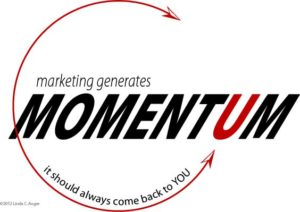F. Scott Fitzgerald said, Intelligence is the ability to hold two opposing thoughts in your mind, maintain tension between the two, and be able to function.
Here is the dichotomy of Social Media:
- Social Media eliminates human contact and thus we, individually and as a people, suffer from isolation.
- Social Media draws reaction from other humans and thus creates and strengthens our sense of community.
It is true—both are true.
In her book Alone Together, MIT Professor Sherry Turkle says that social media is dumbing down society, creating a society of people that have no idea how to function in a society of people.
Consider the plight of Simone Back, a British woman who posted her impending suicide on Facebook. Her 1,000+ friends held a lively discussion about the appropriateness of her post. One commented: “She ODs all the time and she lies.” None of them tried to contact her directly. Police weren’t notified until someone sent a text message to Simone’s mother 17 hours after her initial message was posted.
Can a Tweet or Facebook post take the place of a hug or a phone call, or save a life?
No.
And Yes.
There is the truth that Social Media draws reaction from other humans and thus creates and strengthens our sense of community.
While I was in treatment for endometrial cancer back in 2009, Social Media kept me sane and in touch with the people and networks I could not physically visit. On the days I spent seven hours in the chemo chair, I posted “chemo day, send me jokes,” and the jokes rolled in all day long, keeping me, the nursing staff, and the six or seven other people attached to IV poles laughing and having a great time, instead of withdrawn and obsessing about the poison coursing through our veins and the proximity of our ultimate demise.
And so Social Media—Tweets and Facebook posts—were my conversations and hugs and kisses for the better part of a year, and played a huge part in saving my life.
It’s been two years since my last day in the chemo chair. I’m beginning to have days in which I no longer associate my life with cancer, days in which I am absorbed in generating business, writing better articles and stories, helping my friends be the best they can be—days in which I actually feel the energy and creativity of the “ME” before I was diagnosed.
I posted the message you see below this paragraph after a recent check-up. In less than 6 hours, there were 85 “Likes” and 57 “Comments.” Since I grabbed the image below, the messages have continued to pour in. Each time my iPhone “dings” to tell me there is yet another response, I smile, pump my fist, and scream, “YES!” as loud as I can.

I am so grateful for the amazing people who surround me, even when I’m not aware that I am in their thoughts as much as they are in mine. I am so grateful that they showed up in force on Facebook yesterday, and reminded me.
Maybe the real isolation inherent in Social Media isn’t isolation from each other. Maybe, for many of us, it is isolation from ourselves—the distance we create between our feelings, hopes, fears, and the community in which we live.
Intelligence is the ability to hold two opposing thoughts in your mind, maintain tension between the two, and be able to function.
The answer may be just a click—or a phone call—away.
 And, it’s a circle game. As you create and refine your marketing plans, keep these three things in mind:
And, it’s a circle game. As you create and refine your marketing plans, keep these three things in mind: The next time I catch myself grumbling about the weather, the jerk who just cut me off on the road, or the “imperfection” of some part of my body, I’m determined to grab my copy of
The next time I catch myself grumbling about the weather, the jerk who just cut me off on the road, or the “imperfection” of some part of my body, I’m determined to grab my copy of 
 The visual side of your blog is important, too. Here are 5 Tips for Beautiful Blogs:
The visual side of your blog is important, too. Here are 5 Tips for Beautiful Blogs: